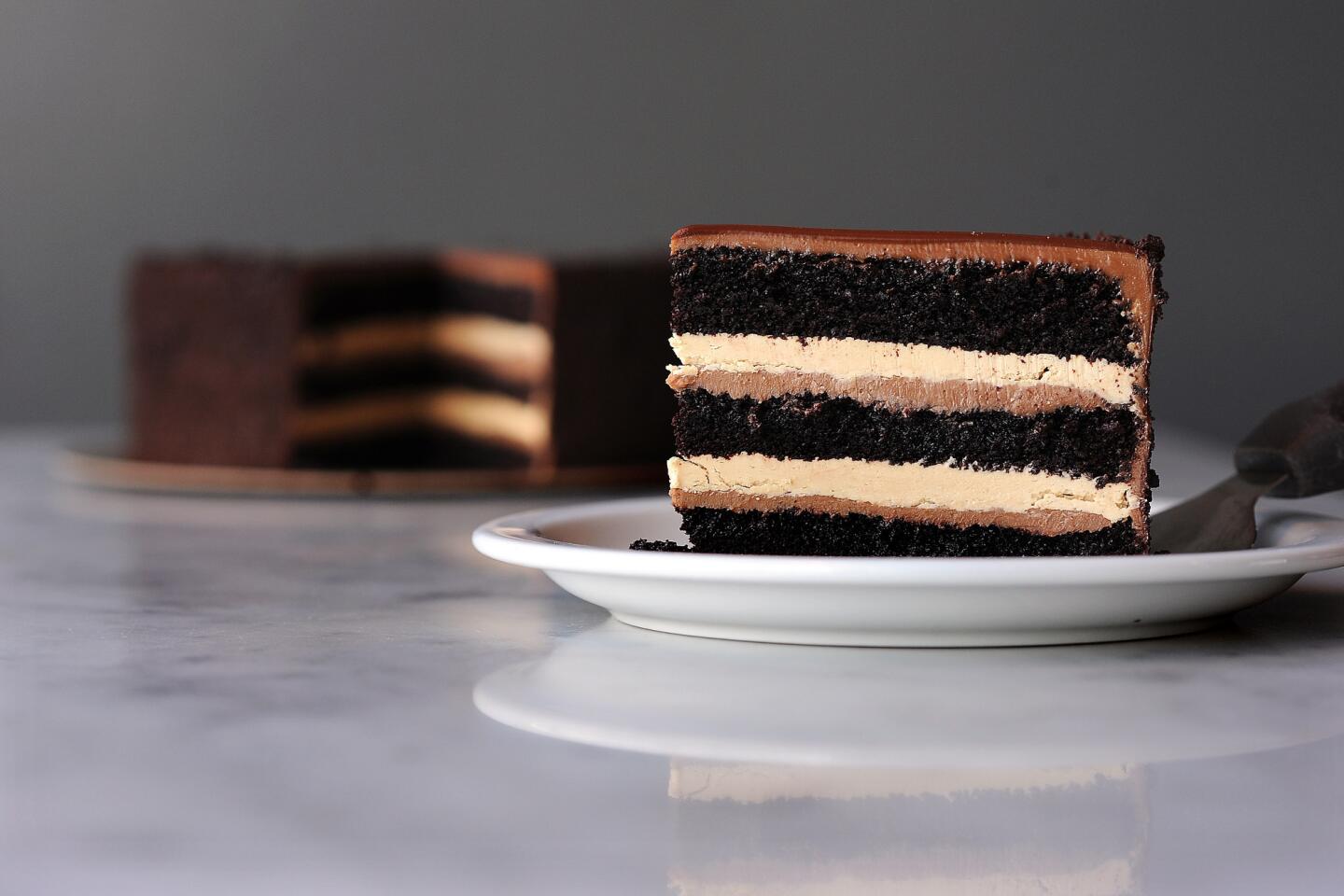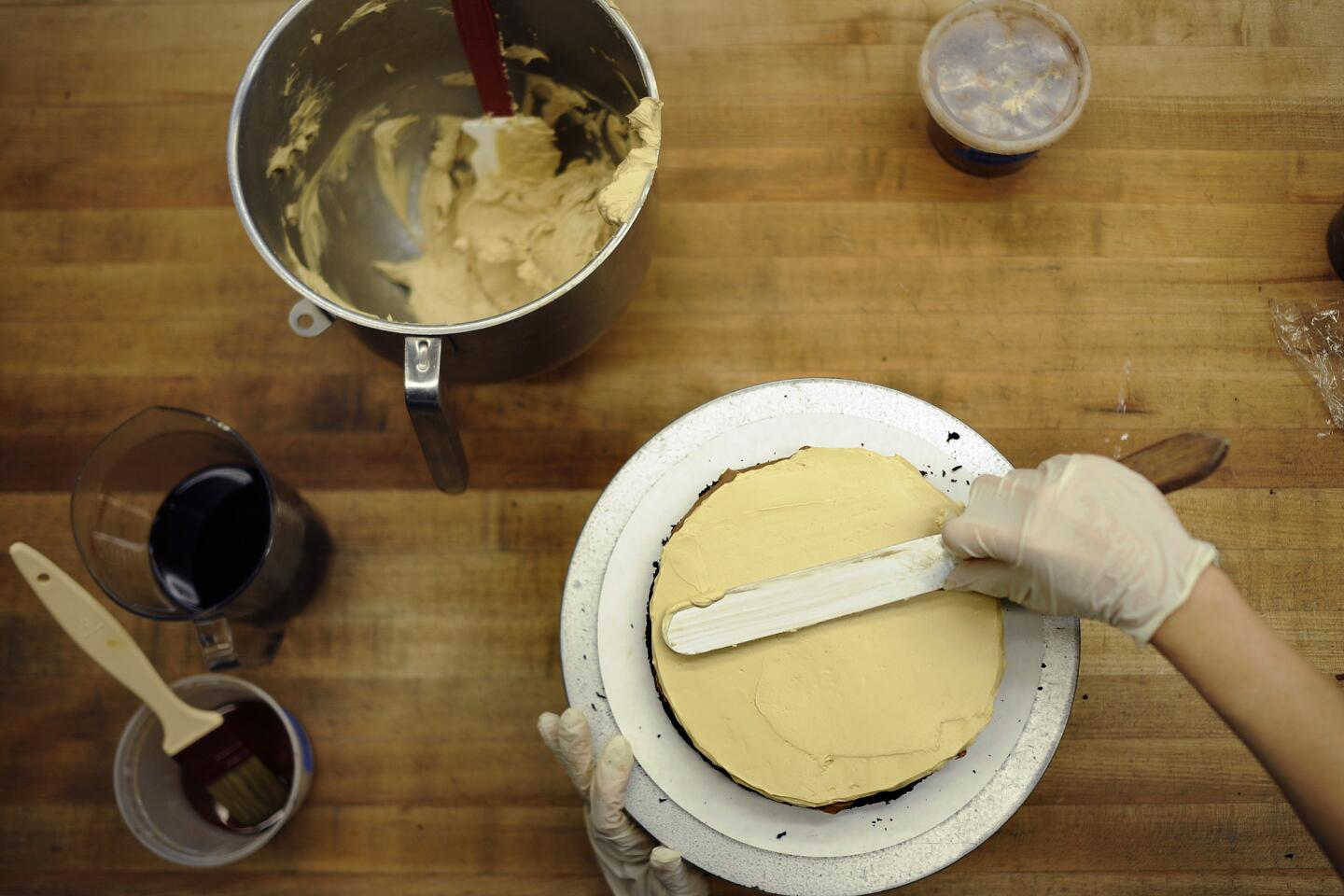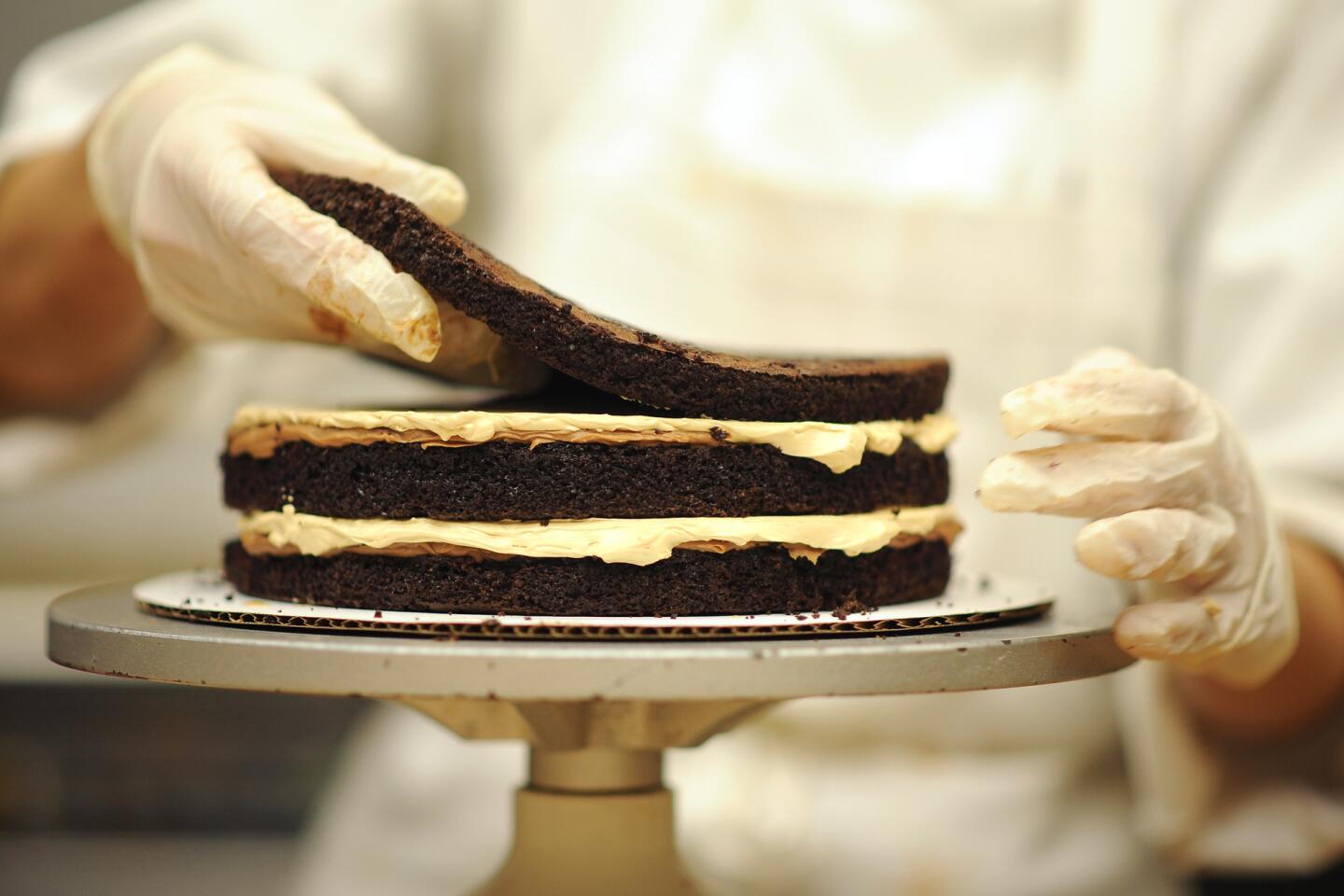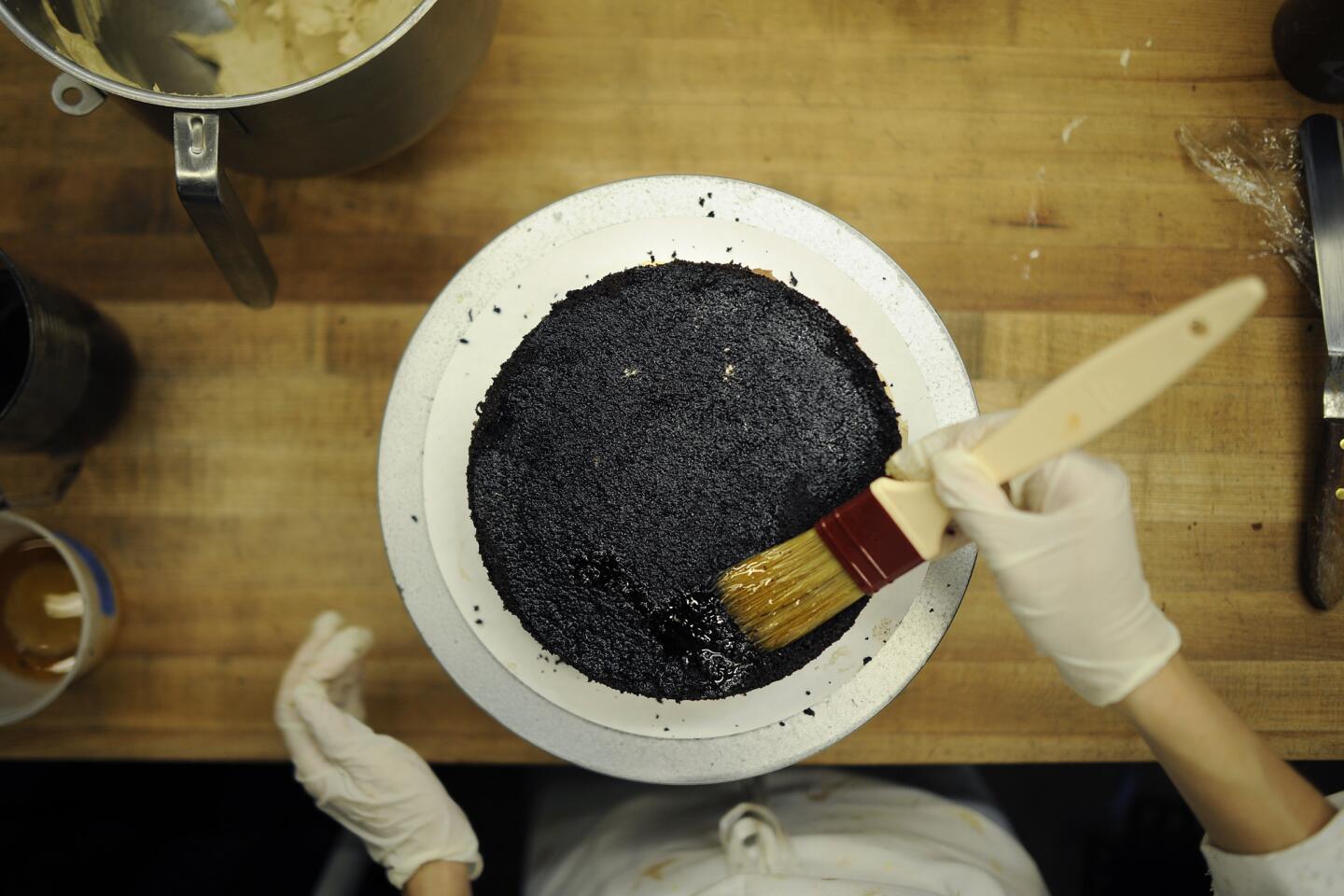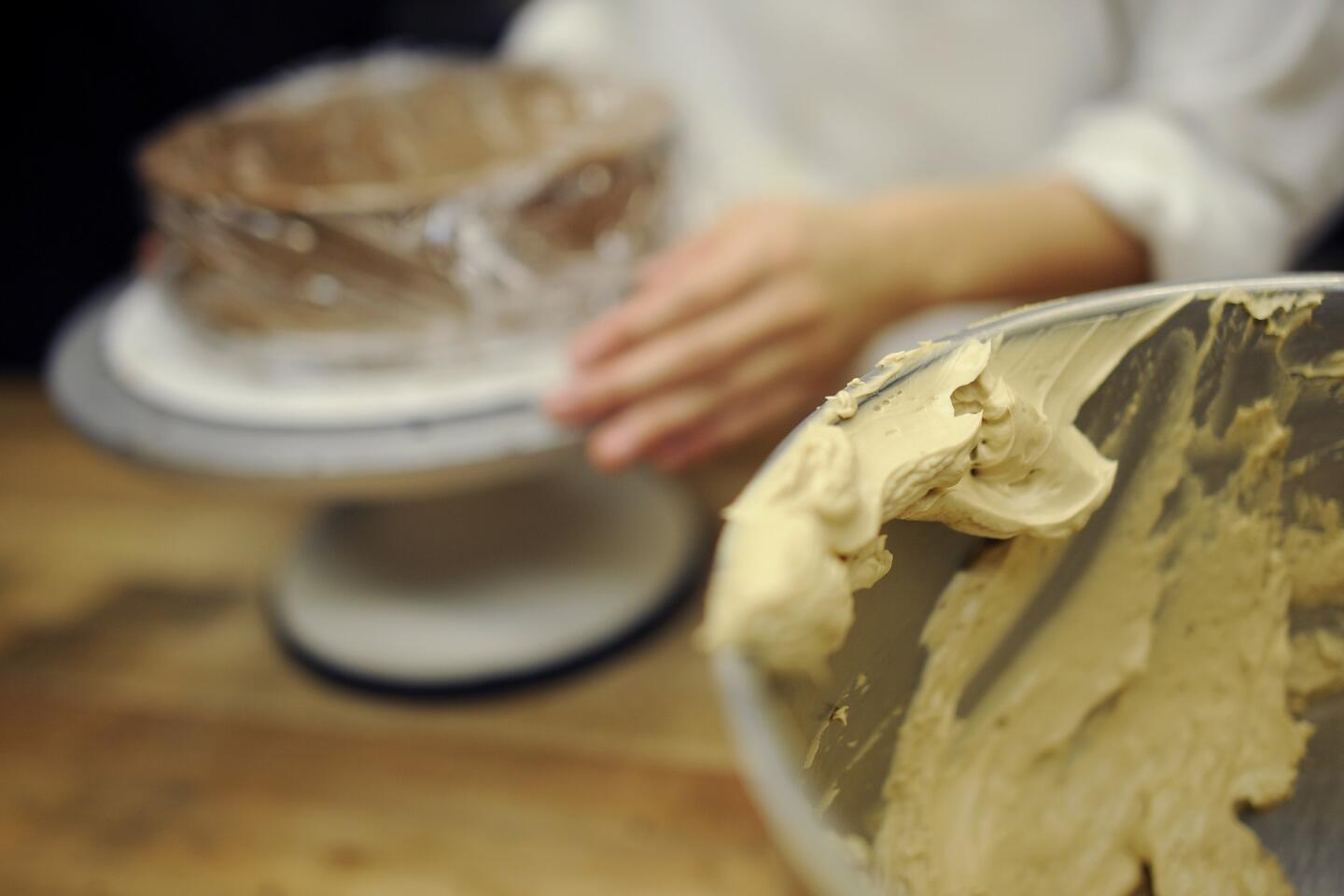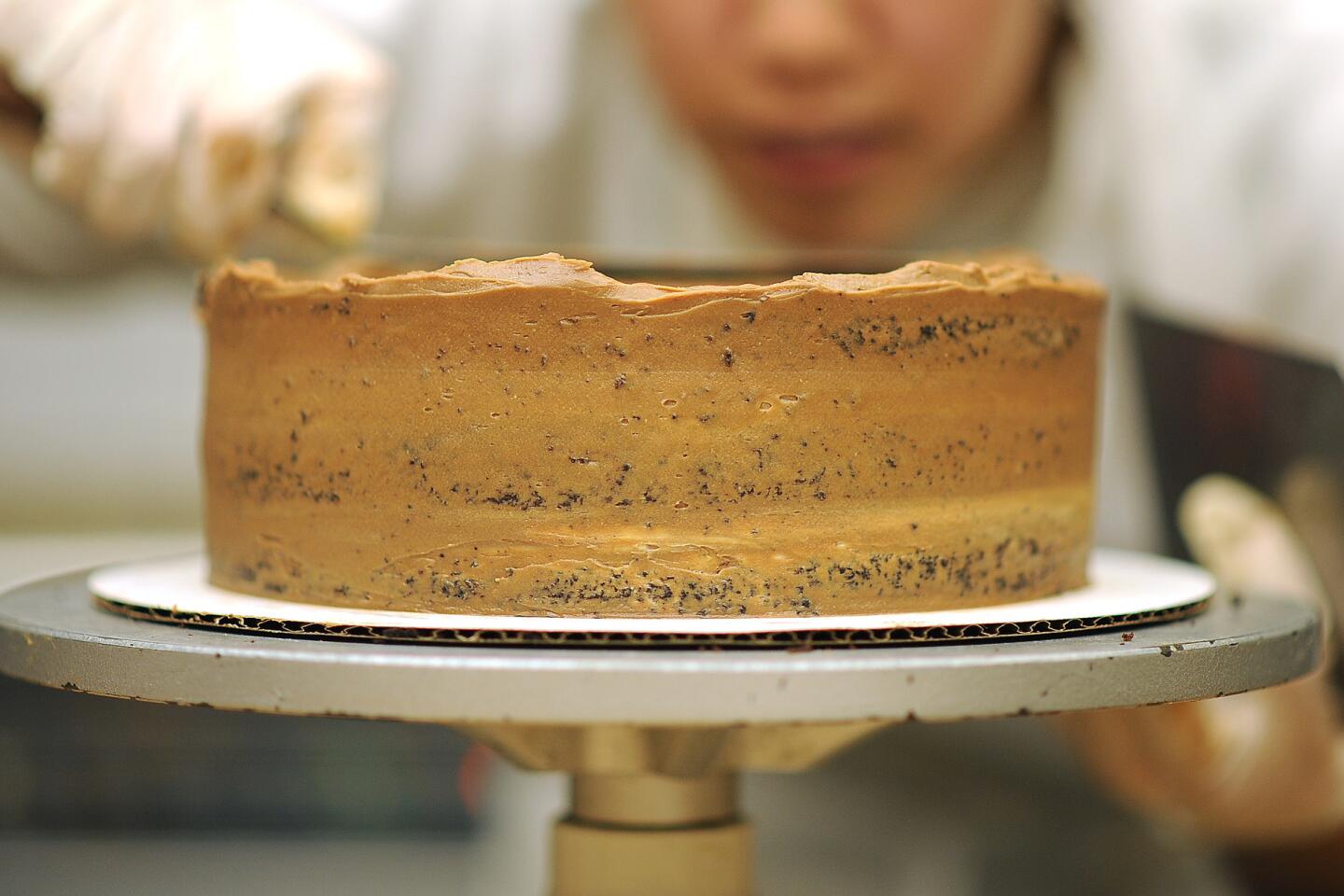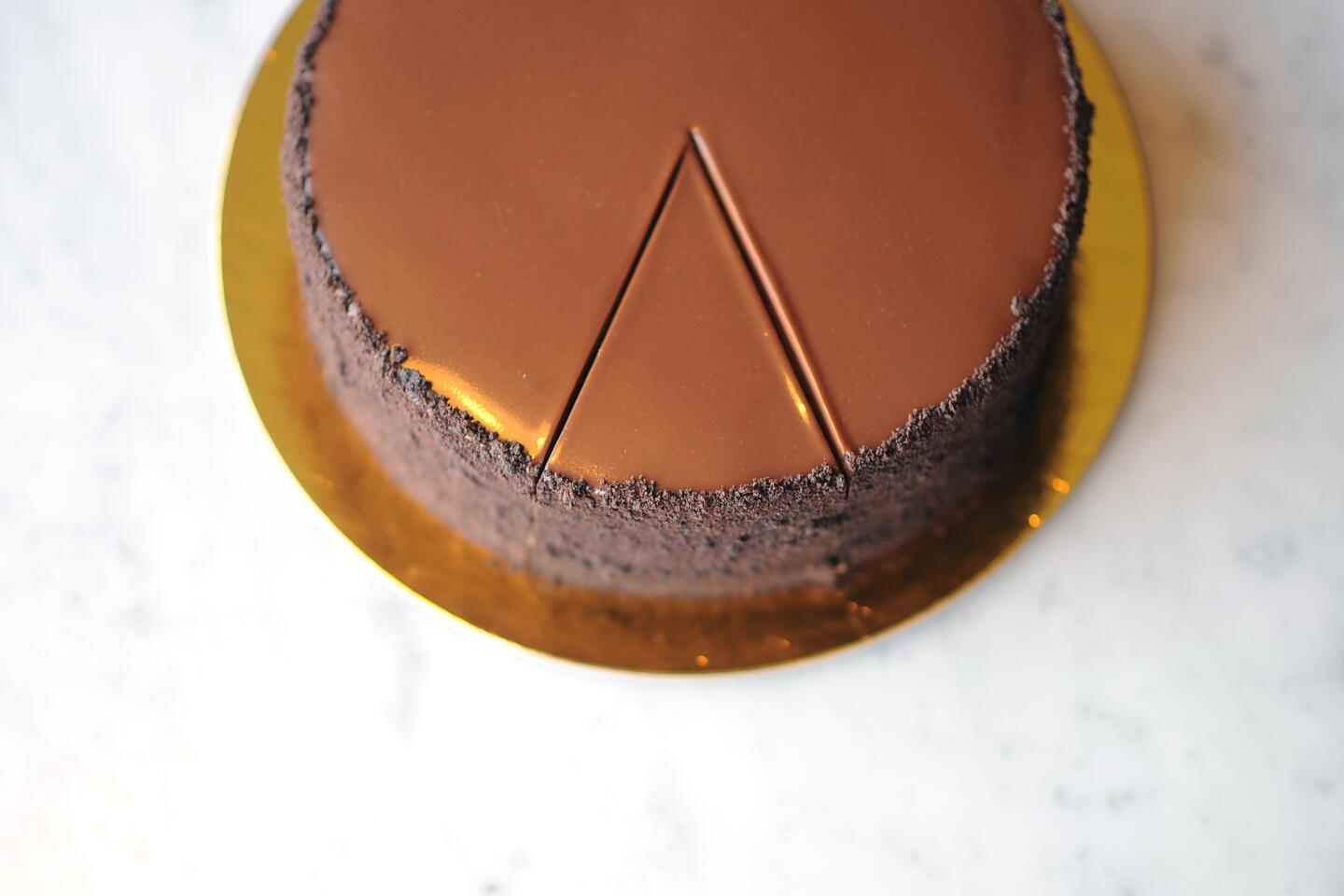This layer cake from Proof Bakery is a sweet lesson in chocolate architecture
- Share via
A great chocolate cake goes like this: Start with a layer of devil’s food cake, nearly obsidian dark from Valrhona cocoa powder. Then add a thick strata of buttercream, another of chocolate crémeux, more cream, more Valrhona. Then more of the same, building up, layer by layer, like chocolate architecture.
After enough layers, seal the construction with frosting as if fastening the lid on a box, then pour warm ganache over the top, the chocolate falling down the sides like a slow waterfall. Finally, fit the sides with a thin layer of cake crumbs, because there’s nothing like a bit of texture to complement the smooth planes of frosting. Knife out a wedge and pause, if you can bear it, to admire a slice, the zones of chocolate forming their own sweet geology.
At Proof Bakery, in Atwater Village, this happens a few times every day. On the enormous wooden table that occupies the center of the bakery’s kitchen, either owner Na Young Ma or likely her pastry chef Rachel Liu, both slender women in white chef’s coats and knit caps — Liu tucks her black hair under a Raiders hat — construct repeating iterations of Proof’s justly famous chocolate espresso cake.
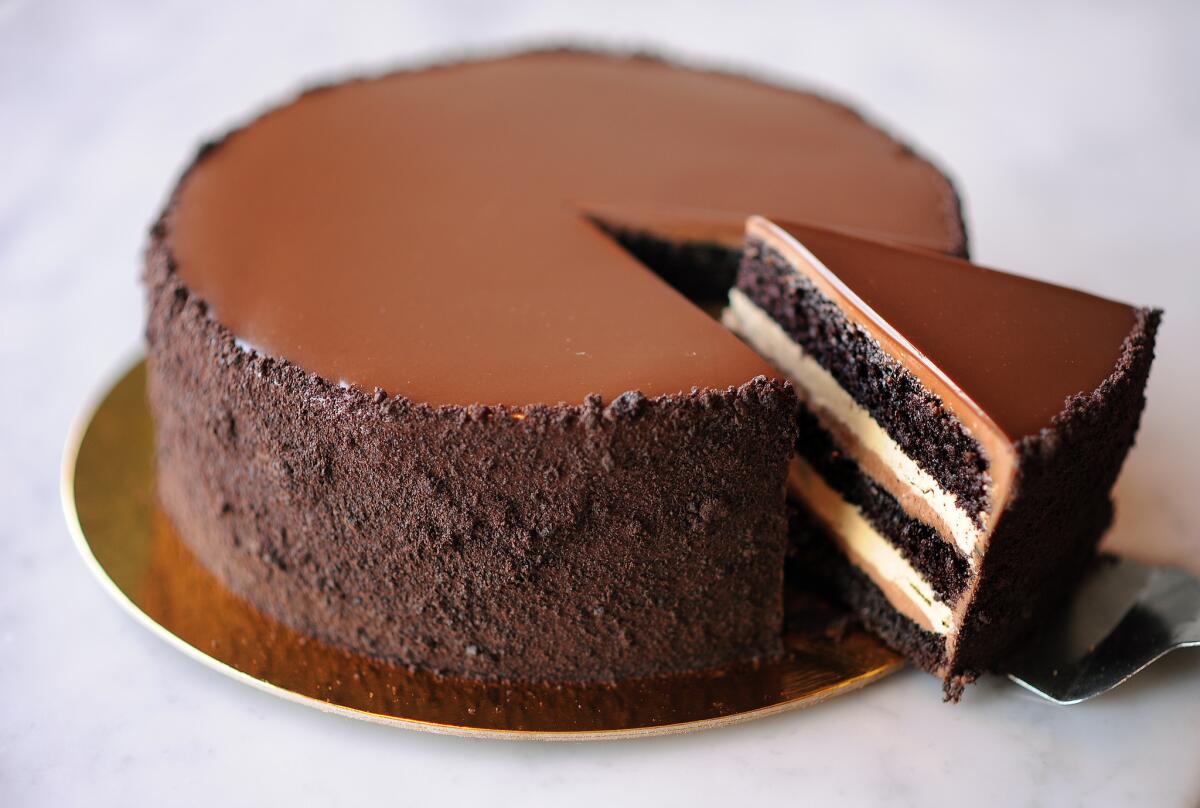
The cake is garnished with chocolate crumbles.
Recipe: Proof Bakery’s chocolate espresso layer cake
There is a certain irony operating here. Ma, a Glendale native who opened Proof Bakery in 2010, is not really a cake person. She likes pastries and tarts, beautiful things built from laminated dough and seasonal fruit, and when she had cakes, they were more from the European tradition than the sweeter American kind.
“I don’t have a sweet tooth,” said Ma recently, stirring a bowl of the bittersweet chocolate glaze that tops the chocolate espresso cake. “Our previous cakes were Sachertorte types, but a lot of people wanted a celebration cake. It was a demand thing — to have something birthday-like.” Thus after much R&D and many chocolate cakes — “we had an apricot one, a cherry marmalade, a Black Forest cake”— Ma and her bakers came up with the chocolate espresso cake, three exquisite layers of cake, crémeux and buttercream, topped with bittersweet chocolate glaze.
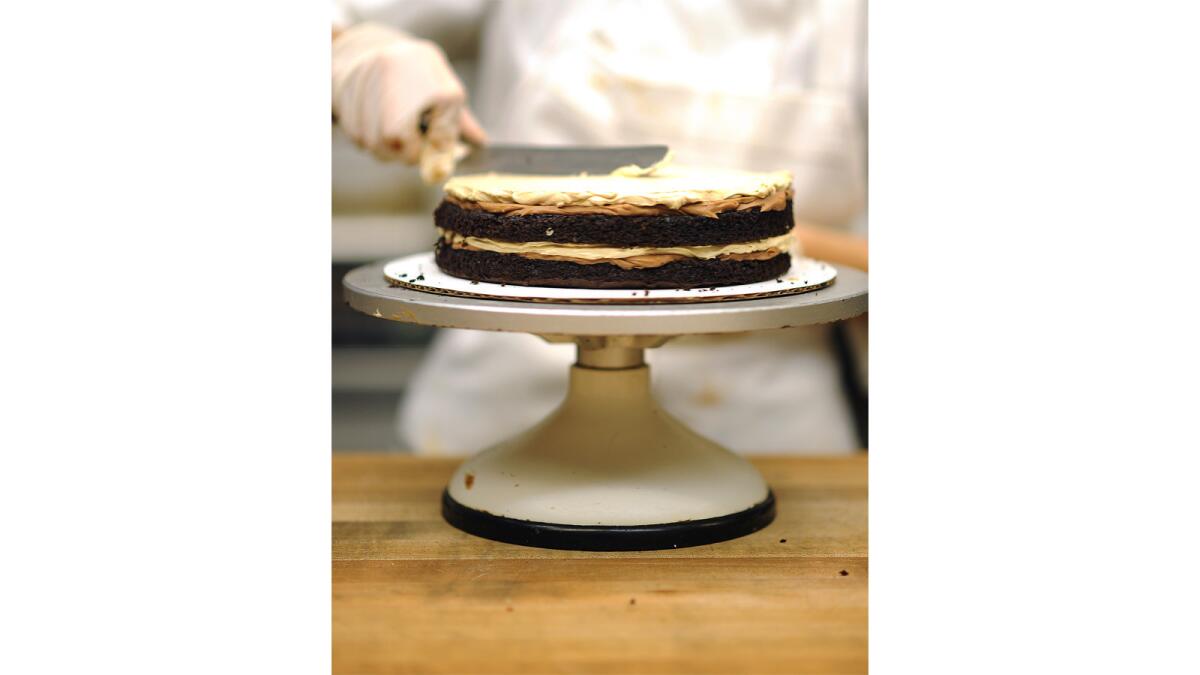
Espresso buttercream is spread onto the second layer of the cake.
It is a simple cake, refined for a layer cake, and not as sweet as most of the cakes in that genre. Think of it as an ode to Valrhona, the French chocolate that so many pastry chefs seem to gravitate toward, with a side note of coffee. There is some symmetry to this, as Proof has always been known for its excellent coffee program. (Initially, it operated as a kind of pop-up for Cognoscenti Coffee; now the bakery pulls mostly Heart and Four Barrel on the La Marzocco espresso machine that fills much of the tiny counter near the pastry cases.)
Valentine’s Day recipes, restaurants and more
The best layer cakes have a specific anatomy. Start with a basic cake, sturdy enough to be cut and tiered and not too sweet. A good buttercream frosting can be flavored to suit, and works as delicious mortar. Although you don’t need it, a second frosting like the crémeux Ma uses, which is more custardy than a traditional ganache but operates in much the same way, adds another repeating layer, and thus another strata of flavor, texture and color.
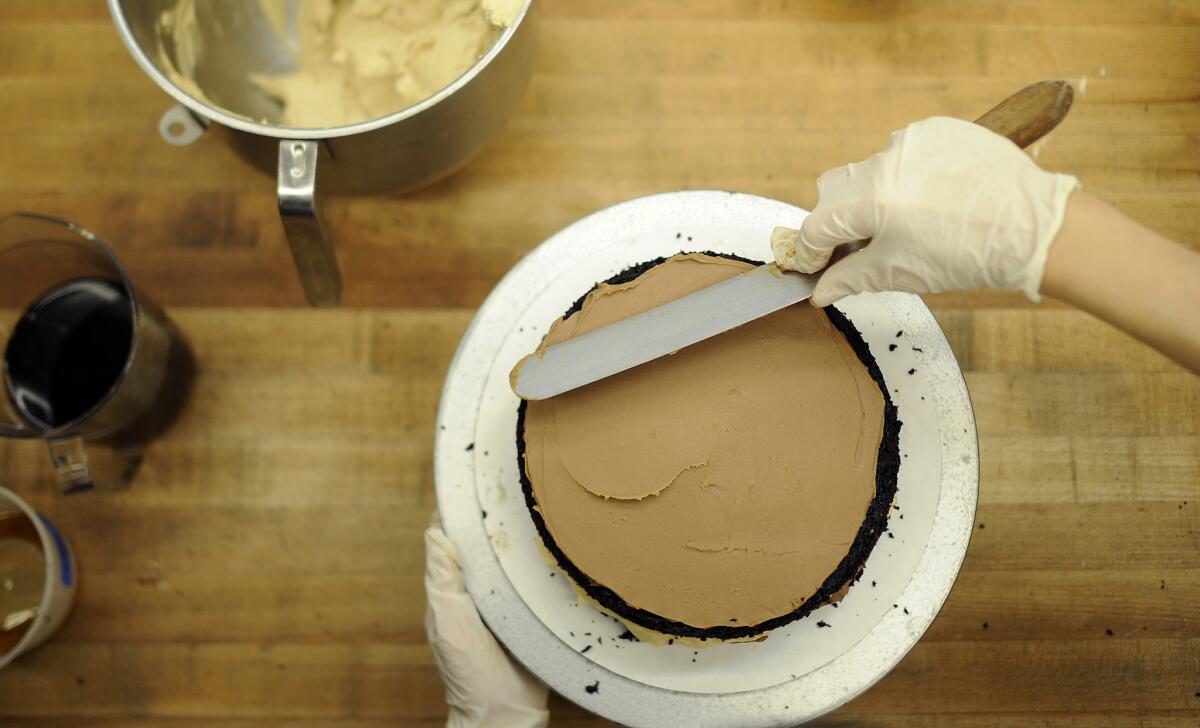
The milk chocolate crémeux is spread over a layer of the cake.
When assembling a layer cake, there are a few caveats: Use a simple syrup, here called a coffee soak, to brush on the layers of cake. This gives you an exceedingly moist crumb without compromising the structure, and allows you to flavor your cake as you please. Then, after layering, crumb coat your cake. In other words, spackle on a thin layer of frosting to the outside of the completed cake to seal in the crumbs, and then chill or freeze it. What this does is seal the cake, insulating it and preventing any errant crumbs from working their way into the final smooth coating. Then you can frost and decorate that chilled cake as you please.
At Proof, the glaze goes over the entire cake — the warm bittersweet chocolate adhering to the cold sealed cake, the glaze a glossy synthesis of butter and cream, honey and more Valrhona, 71% cacao to the 46% of the crémeux. The finished cake isn’t decorated at all, unless you count the crumbs on the sides.
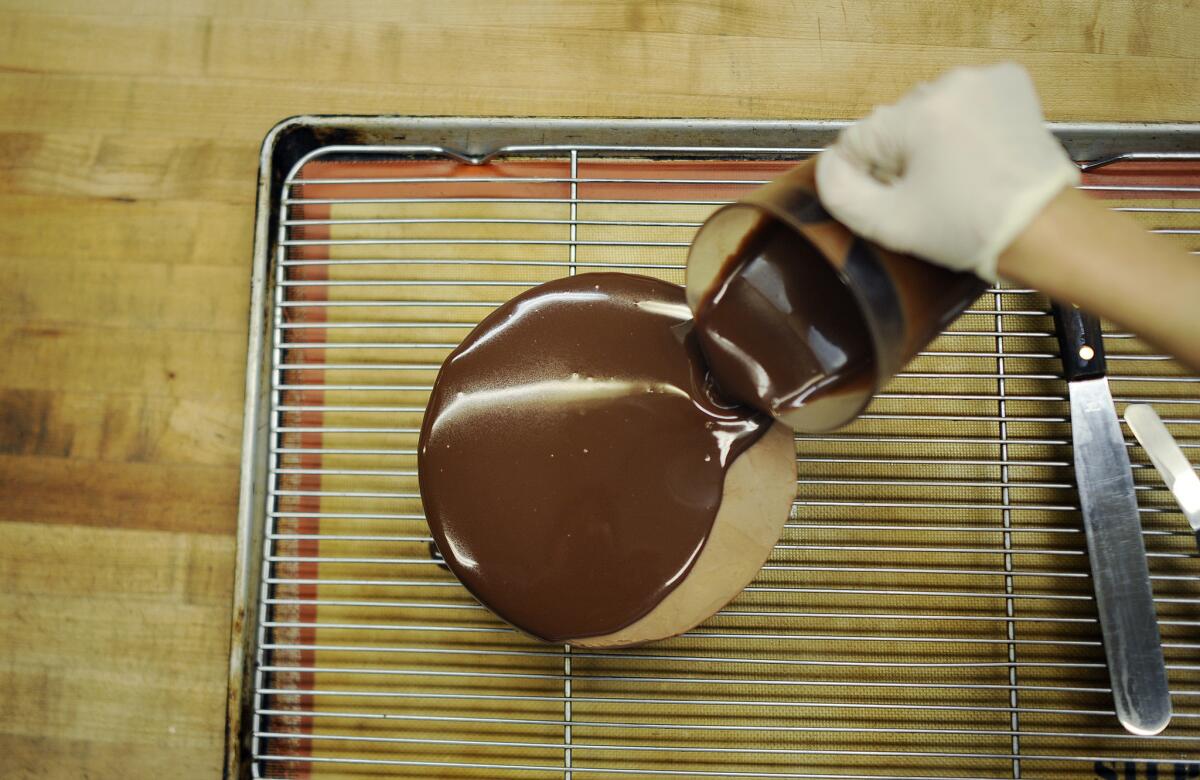
The cake is topped with bittersweet chocolate glaze.
“I admire piping,” says Ma, standing beside a rack that’s taller than she is, filled with copper canelé molds, linen bread couches, wooden rulers and rolling pins. “I don’t use food coloring, which is an extra challenge.” Ma has always been more interested in bread baking and European-style pastry than in tall, frosting-based cakes. “Cakes and breads: That’s two different mentalities.”
But they’re two mentalities that Ma is blending these days, emulsifying if you will, like the enormous bowl of chocolate and butter on the wooden table, as she smiles and admits that this year, she’s expanding her bakery’s small repertoire — to include a full cake menu.
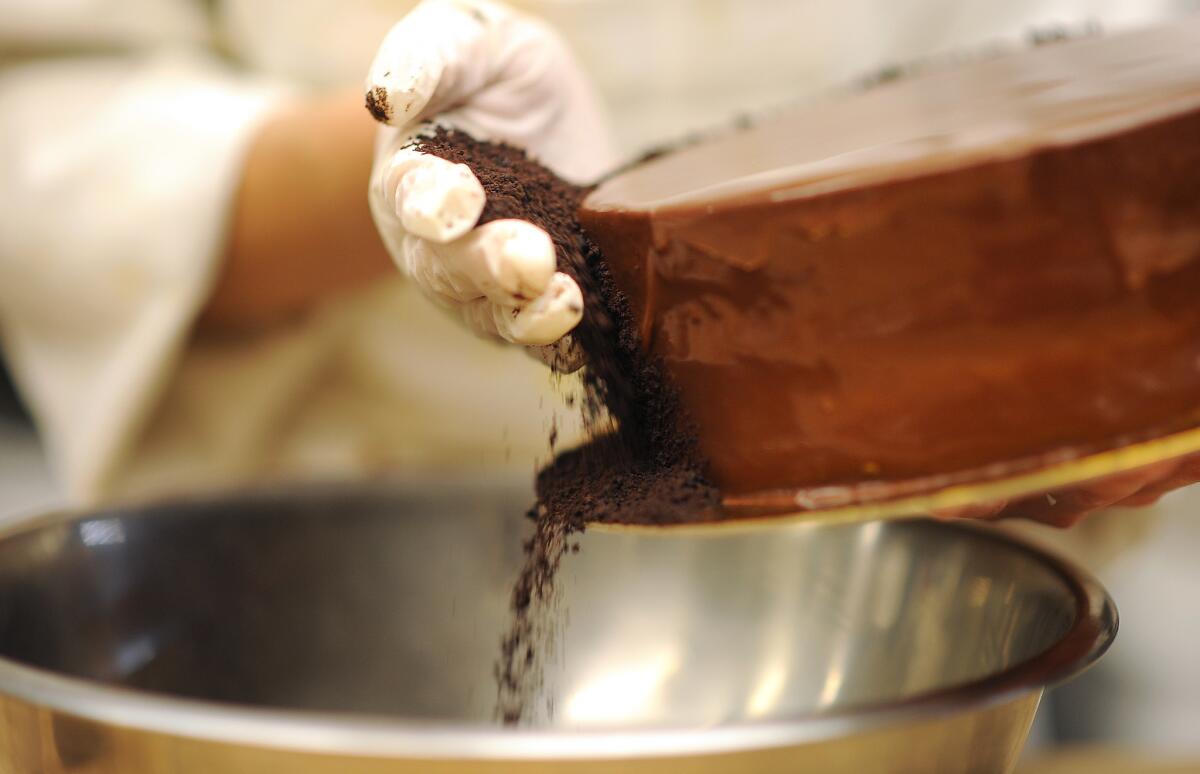
The final step to assembling the cake is applying a crumb coating around its side.
MORE
Where to get great chocolates for Valentine’s Day
Want a gothic Valentine’s Day gift? This occult-inspired pop-up in Hollywood is for you
More to Read
Eat your way across L.A.
Get our weekly Tasting Notes newsletter for reviews, news and more.
You may occasionally receive promotional content from the Los Angeles Times.
